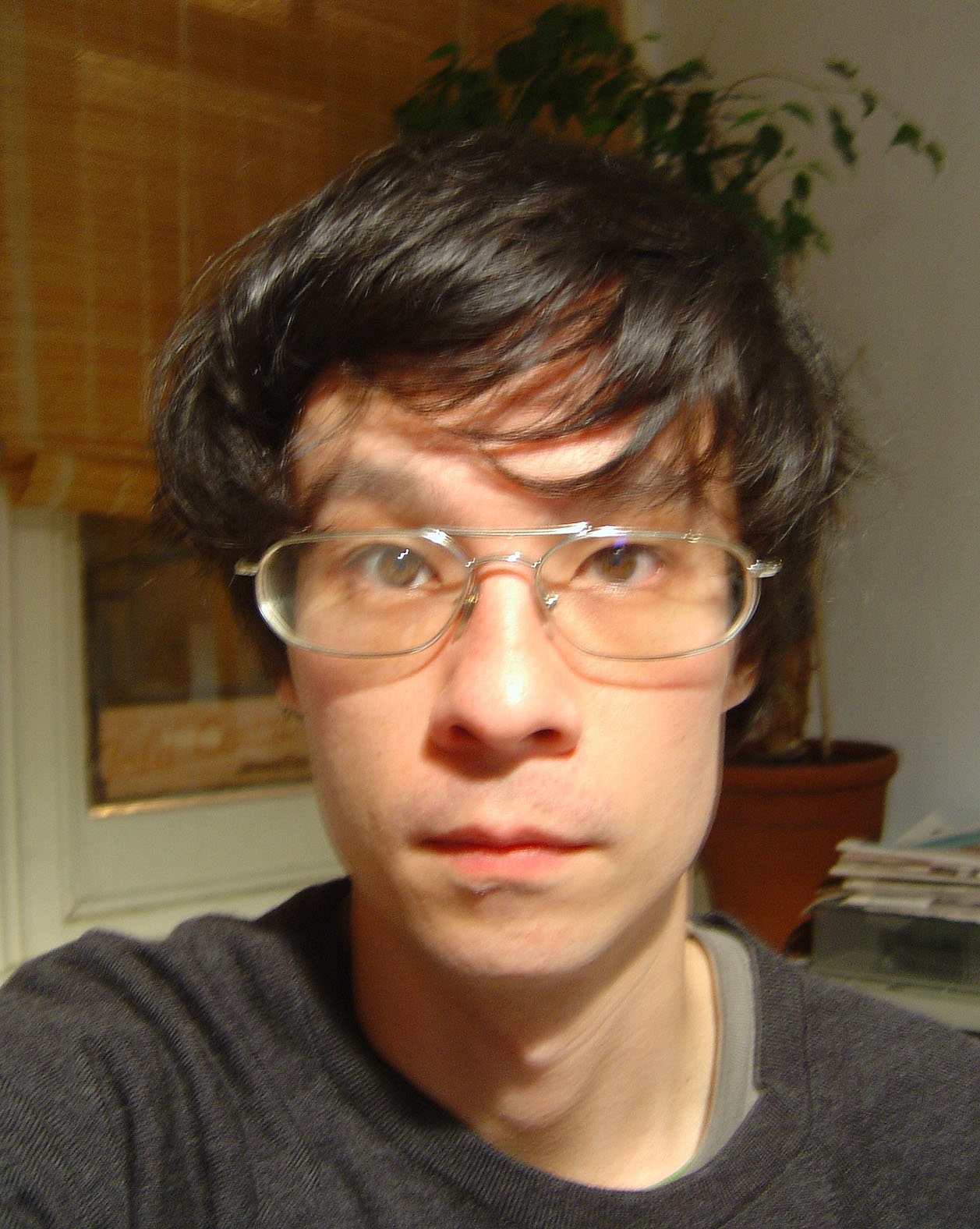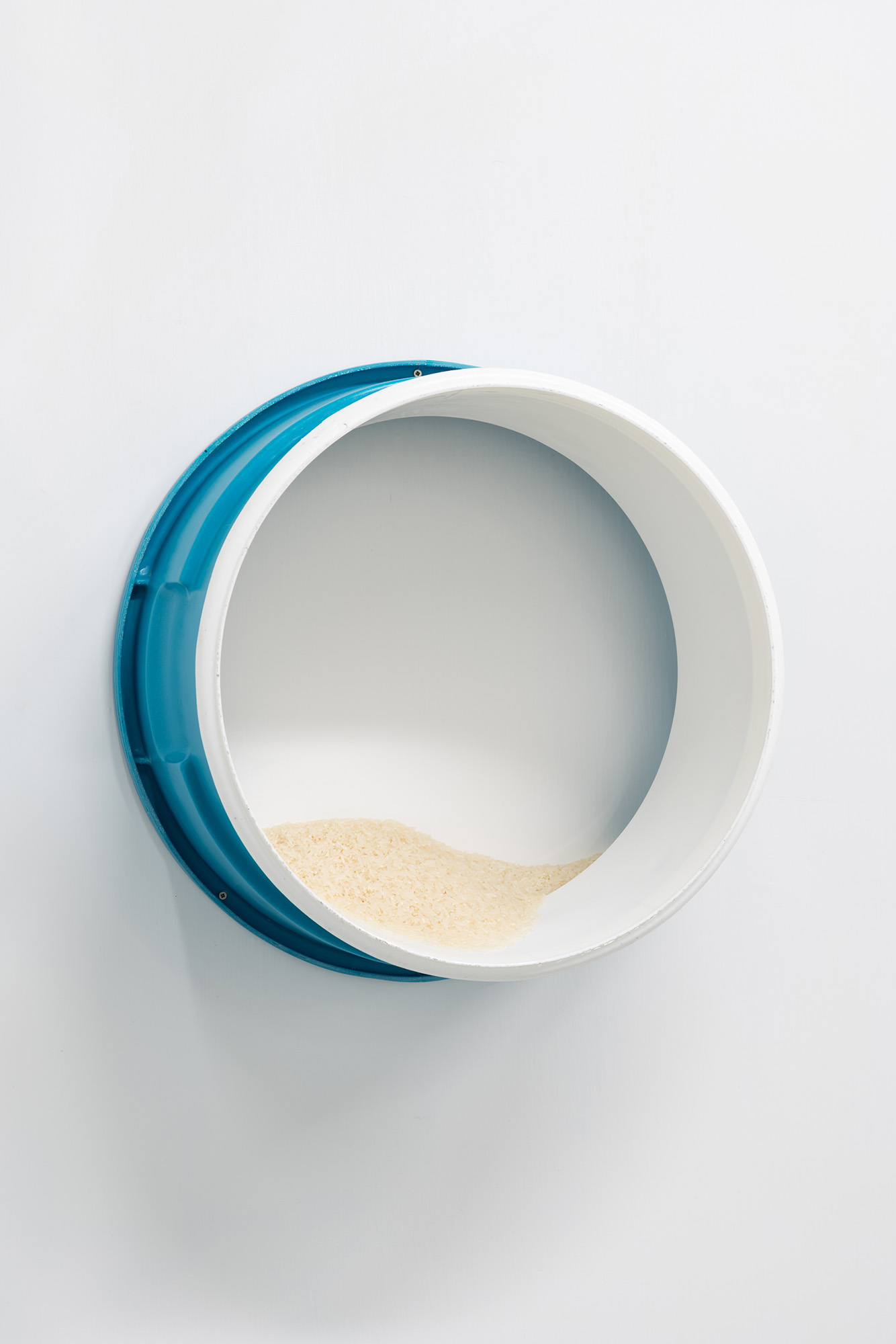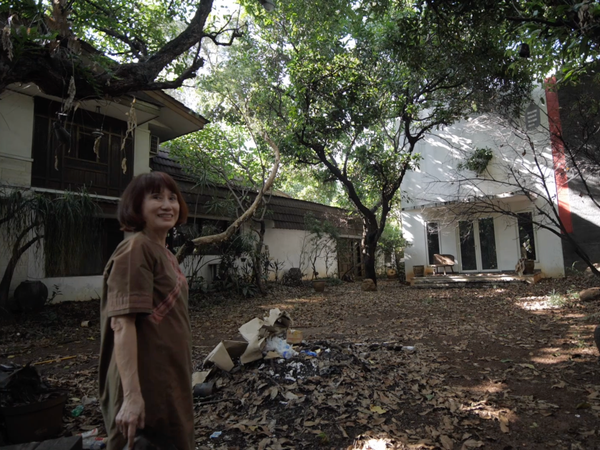Video
Between Desire and Dependency: Interview with Phillip Lai

Instability and impermanence guide the development of Phillip Lai’s installations. His process involves the accumulation of quotidian materials: buckets, rubber mats, strips of tires, fruit, nuts and rice. But these objects, placed in unexpected orders throughout galleries, are only provisional—they are the temporary emergence of abstract concepts in space, intended to estrange both visitors and the gallery space itself.
Born in Kuala Lumpur in 1969, Lai’s career as a sculptor and installation artist began in the early 1990s. In 2001, he took up a teaching position at Goldsmiths, University of London, where he is now a senior lecturer in fine art. Over the past four years, Lai has been featured in solo exhibitions at London’s Camden Arts Centre and Stuart Shave/Modern Art, as well as Edouard Malingue gallery in Hong Kong. In recognition of his decades of work, he has been shortlisted for the Hepworth Prize for Sculpture 2018, alongside artists Michael Dean, Mona Hatoum, Magali Reus and Cerith Wyn Evans.
With an exhibition of the shortlisted artists’ work on view at The Hepworth Wakefield gallery, and the prize itself being awarded on November 15, I wrote to Lai to discuss the significance of his prosaic compositions.
You’ve been nominated for your practice in general, but could you talk briefly about your new pieces displayed at The Hepworth Prize for Sculpture exhibition?
There are a number of works that came together during the install. The most prominent of these is a wall-based, multi-part sculptural work, which occupies the height of the gallery. Although the installation is spatially fragmented, it also asserts a strong architectural structure. The dynamics or operations of the disparate elements can be seen to function along vertical and horizontal planes, beyond the autonomy of a sculptural work that we sometimes assume.
Over the years my work has been quite diverse in its modes, but recently, I have felt that a lot of long-standing positions and contexts are being consolidated and resolved in my new work. This has something to do with where I currently find myself in my practice, as well as the shape of the world around me, which has undergone some bewildering changes.
Your works speak of divisions in physical and social spaces, between the public and private, labor and leisure. Where did this begin, how did you arrive at this subject matter?
I’m not sure if there was a definite beginning or source. But the bifurcating or separating out, correlations and sometimes doublings that are present in my work are formal and conceptual structures that speak of irreconcilable differences, as well as connections. This no doubt has something to do with my cultural mix and shift of geographic homes as a child. Social and public domains, rather than domestic spaces, seem much more important to me to occupy and claim. There are unexpected presences or intimacies in these areas.

Another one of your works in The Hepworth show is titled Guest Loves Host in a Way Like No Other (2016), and resembles a stainless steel kitchen counter with water jugs. It seems to invite people to either expect or to serve drinks, thus alluding to domestic labor and leisure. How do you envisage the relationship between hosts and guests?
In the power relations at play, the relationship between a host and a guest is a key one. Suffice to say these two players see things differently. Their relationship is potentially one of care but also might encompass the desire to impress. There is certainly a uniquely staged conjunction in this relationship to do with desires and roles. And actually I see the work itself embodying both guest and host.
You often appropriate quotidian materials in your sculptures. How do you choose which objects to isolate and replicate?
I have my methods. But on the whole, my practice is much more exploratory an enterprise than disciplined. I work things out through a diffused rigor, familiarizing myself with specific objects in the studio and elsewhere. I have suspicions about things that are sometimes quite modest or abstract, and a key aspect of my process is to find a way to retain these fragments without too many assumptions, until they fall into place over time.

You’ve described the creation of your objects as an “absurd expenditure of labor,” but labor is not apportioned equally. Whose labor do your sculptures speak of?
Certainly there are gestures in my sculptures to do with labor, and then there is quite a lot of “work” involved in the work itself. There are also aspects of some pieces where, on a slightly fictive level let’s say, I have located the notion of labor. Within this are aspects of resistance, exhaustion and collectivity. But in fact my work does not intend to denote or demonstrate “labor,“ and it would be good to loosen that expectation. I would describe it as more of an ontological location or condition, although in broad terms I think it is all our labor—the labor of culture and progress, which is a bit grand. With the abstract leanings of some of my work, I think it is worth regarding these gestures much less literally and more metaphorically, or as emotive or psychological qualities to be understood on their own terms.
Many of your sculptures suggest but deny usage. They appear suspended in action. Does this relate to how you see the gallery as a space of imitation or unrealized potential?
That is a layered question. I have previously made work that responds to or intervenes in the workings of a gallery, but that isn’t quite what you are asking. I don’t really see usage as being denied in my works. They’re more objects and conditions that are rendered to be of a different, not expected order. Sometimes things that seem to be vessels, for example, don’t have a base because they are for me more akin to being parts of an assembled whole. My work sustains a kind of active state. Although the energy of potential is relevant to some of the images that my work produces—and sometimes this is a potential that seems held back—I think imitation is more the basis on which these gestures take place.

At what point in your process do you turn from the space of the gallery to composition and form?
How something can exist within or inhabit space is really important to me. The work that I produce often attends to this status, usually embodying a degree of transience. With my recent work, especially my wall-attached sculptural pieces, what I see as a kind of locational abstraction has led me to shift emphasis to composition and form. These wall works are much more optical although the physical body is still very much engaged. Some of my new work is also very colorful, which demands a new kind of attention from me.
So far I haven’t addressed the temporal aspect of your work, but labor is inseparable from time. How does your work address time?
Well, you touched on it earlier with the idea of suspension. But there isn’t a formula or singular mode for time. Across my work there are many temporal positions that take place, both within the works themselves and how they are encountered within spaces from specific viewpoints. Perhaps my work addresses time in these ways. Labor is of course a key factor that impacts how we perceive and live time but there are many instances in my previous work that present looser possibilities for the structure of time. Provisional arrangements of objects, for example, tease the possibility that the different elements are subject to unexpected change in affective ways.
In certain cases, such as your untitled 1997 installation at The Showroom, London, your 2007 video Untitled (Coffee Display) and some sculptures produced following 2016, you have included organic matter such as fruit stones, cigarettes, soy sauce, coffee, rice. What is the significance of these materials?
I am really interested in ingestion, and this is relegated not only to materials that might be edible. My fascination has to do with the close, carnal interactions between humans and materials—things to do with desire, dependency, sustenance and nourishment. There is also what these potentially sustaining materials are as volumes and quantities. I approached soy sauce, coffee and rice with an interest in their bulk, mass or distributive potential. Within my works they suggest a measure of how much something might be acquired or held on to. A piece of fruit can be held in the hand, consumed and provide complete and immediate satisfaction, as can a cigarette, whereas coffee and especially rice has a more ongoing quality.
You teach fine art and art history at Goldsmiths and you’re currently a Kenneth Armitage Fellow. What plans do you have following this prize?
The fellowship has been generous and will continue for another year. I’m trying to make the fullest use of it in the studio. I will have another show at Galleria Franco Noero in Turin in 2019, so I will be gradually working towards that.
The Hepworth Prize for Sculpture exhibition is on view at the Hepworth Wakefield gallery until January 20, 2019. The winner of the prize will be announced November 15, 2018.
To read more of ArtAsiaPacific’s articles, visit our Digital Library.








